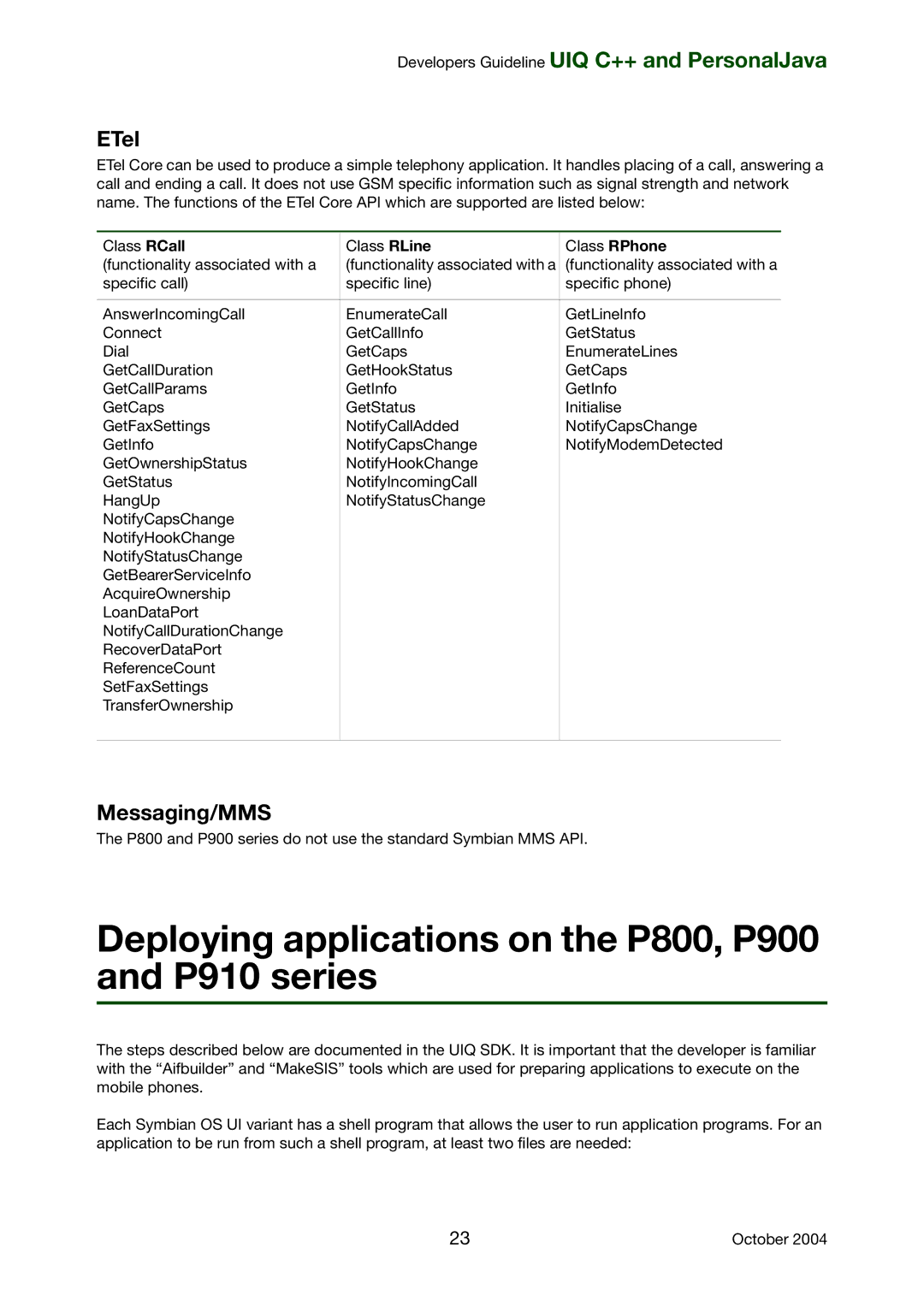Developers Guideline UIQ C++ and PersonalJava
ETel
ETel Core can be used to produce a simple telephony application. It handles placing of a call, answering a call and ending a call. It does not use GSM specific information such as signal strength and network name. The functions of the ETel Core API which are supported are listed below:
Class RCall | Class RLine | Class RPhone |
(functionality associated with a | (functionality associated with a | (functionality associated with a |
specific call) | specific line) | specific phone) |
|
|
|
AnswerIncomingCall | EnumerateCall | GetLineInfo |
Connect | GetCallInfo | GetStatus |
Dial | GetCaps | EnumerateLines |
GetCallDuration | GetHookStatus | GetCaps |
GetCallParams | GetInfo | GetInfo |
GetCaps | GetStatus | Initialise |
GetFaxSettings | NotifyCallAdded | NotifyCapsChange |
GetInfo | NotifyCapsChange | NotifyModemDetected |
GetOwnershipStatus | NotifyHookChange |
|
GetStatus | NotifyIncomingCall |
|
HangUp | NotifyStatusChange |
|
NotifyCapsChange |
|
|
NotifyHookChange |
|
|
NotifyStatusChange |
|
|
GetBearerServiceInfo |
|
|
AcquireOwnership |
|
|
LoanDataPort |
|
|
NotifyCallDurationChange |
|
|
RecoverDataPort |
|
|
ReferenceCount |
|
|
SetFaxSettings |
|
|
TransferOwnership |
|
|
|
|
|
Messaging/MMS
The P800 and P900 series do not use the standard Symbian MMS API.
Deploying applications on the P800, P900 and P910 series
The steps described below are documented in the UIQ SDK. It is important that the developer is familiar with the “Aifbuilder” and “MakeSIS” tools which are used for preparing applications to execute on the mobile phones.
Each Symbian OS UI variant has a shell program that allows the user to run application programs. For an application to be run from such a shell program, at least two files are needed:
23 | October 2004 |
